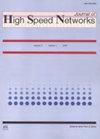An energy-efficient quorum-based locking protocol by omitting meaningless methods on object replicas
IF 1
Q4 COMPUTER SCIENCE, INFORMATION SYSTEMS
引用次数: 1
Abstract
In current information systems, a huge number of IoT (Internet of Things) devices are interconnected with various kinds of networks like WiFi and 5G networks. A large volume of data is gathered into servers from a huge number of IoT devices and is manipulated to provide application services. Gathered data is encapsulated along with methods to manipulate the data as an object like a database system. In object-based systems, each application is composed of multiple objects. In addition, each object is replicated on multiple physical servers in order to increase availability, reliability, and performance of an application service. On the other hand, replicas of each object is required to be mutually consistent in presence of multiple transactions. Here, a larger amount of electric energy and computation resources are consumed in physical servers than non-replication approaches to serialize conflicting transactions on multiple replicas. Many algorithms to synchronize conflicting transactions are so far proposed like 2PL (Two-Phase Locking) and TO (Timestamp Ordering). However, the electric energy consumption is not considered. In this paper, an EEQBL-OMM (Energy-Efficient Quorum-Based Locking with Omitting Meaningless Method) protocol is newly proposed to reduce not only the average execution time of each transaction but also the total electric energy consumption of servers by omitting the execution of meaningless methods on replicas of each object. Evaluation results show the total electric energy consumption of servers, the average execution time of each transaction, and the number of aborted instances of transactions in the EEQBL-OMM protocol can be on average reduced to 79%, 62%, and 80% of the ECLBQS (Energy Consumption Laxity-Based Quorum Selection) protocol which is proposed in our previous studies in a homogeneous set of servers, respectively. In addition, the evaluation results show the total electric energy consumption of servers, the average execution time of each transaction, and the number of aborted instances of transactions in the EEQBL-OMM protocol can be on average reduced to 73%, 50%, and 67% of the ECLBQS protocol in a heterogeneous set of servers, respectively. The evaluation results also show at most 48% and 51% of the total number of methods can be omitted as meaningless methods in a homogeneous set and heterogeneous set of servers, respectively, in the EEQBL-OMM protocol.一种节能的基于群体的锁定协议,在对象副本上省略了无意义的方法
在当前的信息系统中,大量的物联网设备与各种网络互联,如WiFi和5G网络。大量数据从大量物联网设备中收集到服务器中,并被操纵以提供应用服务。收集到的数据连同操作数据的方法一起被封装为一个对象,就像数据库系统一样。在基于对象的系统中,每个应用程序由多个对象组成。此外,每个对象在多个物理服务器上进行复制,以提高应用程序服务的可用性、可靠性和性能。另一方面,在存在多个事务的情况下,每个对象的副本需要相互一致。在这里,与非复制方法相比,在物理服务器中消耗更多的电能和计算资源来序列化多个副本上的冲突事务。目前提出了许多同步冲突事务的算法,如2PL(两阶段锁定)和to(时间戳排序)。但是,没有考虑电能消耗。本文提出了一种EEQBL-OMM (efficient Quorum-Based Locking with省去无意义方法)协议,该协议不仅减少了每个事务的平均执行时间,而且通过在每个对象的副本上省去无意义方法的执行,减少了服务器的总电能消耗。评估结果显示,EEQBL-OMM协议中服务器的总电能消耗、每个事务的平均执行时间和事务终止实例的数量平均可以分别减少到我们之前在同质服务器集研究中提出的ECLBQS (energy consumption Laxity-Based Quorum Selection)协议的79%、62%和80%。此外,评估结果显示,在异构服务器集中,EEQBL-OMM协议的服务器总电能消耗、每个事务的平均执行时间和事务中止实例的数量可以分别平均降低到ECLBQS协议的73%、50%和67%。评估结果还显示,在EEQBL-OMM协议中,在同构服务器集和异构服务器集中,最多有48%和51%的方法可以作为无意义的方法被省略。
本文章由计算机程序翻译,如有差异,请以英文原文为准。
求助全文
约1分钟内获得全文
求助全文
来源期刊

Journal of High Speed Networks
Computer Science-Computer Networks and Communications
CiteScore
1.80
自引率
11.10%
发文量
26
期刊介绍:
The Journal of High Speed Networks is an international archival journal, active since 1992, providing a publication vehicle for covering a large number of topics of interest in the high performance networking and communication area. Its audience includes researchers, managers as well as network designers and operators. The main goal will be to provide timely dissemination of information and scientific knowledge.
The journal will publish contributed papers on novel research, survey and position papers on topics of current interest, technical notes, and short communications to report progress on long-term projects. Submissions to the Journal will be refereed consistently with the review process of leading technical journals, based on originality, significance, quality, and clarity.
The journal will publish papers on a number of topics ranging from design to practical experiences with operational high performance/speed networks.
 求助内容:
求助内容: 应助结果提醒方式:
应助结果提醒方式:


